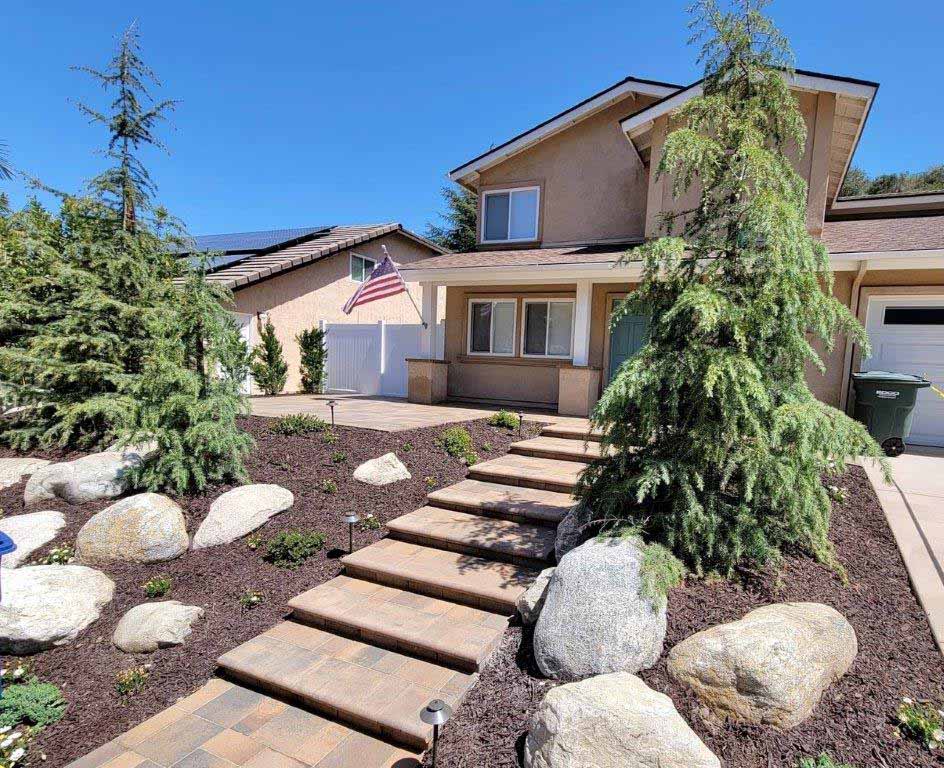

FAQs About Hardscapes
1. What does the term “hardscaping” refer to in landscaping?
Hardscaping involves the non-living or “hard” elements incorporated into a landscape design. This encompasses features like pathways, driveways, patios, retaining walls, decks, pergolas, outdoor kitchens, fire pits, and any other structural elements that enhance the functionality and aesthetics of outdoor spaces.
2. How does hardscaping benefit my outdoor living space?
Hardscaping offers several benefits, including increased property value, extended usable space for outdoor activities and entertainment, reduced maintenance compared to traditional landscaping, improved drainage, and erosion control, ultimately enhancing the overall appeal and functionality of your property.
3. What materials can be used for hardscaping projects?
A wide range of materials can be used for hardscaping, providing versatility in design and functionality. Common materials include natural stone, brick, concrete, pavers, gravel, wood, composite materials, and various types of metals, each offering unique aesthetics and durability suited for different purposes.
4. How do I choose the right hardscaping features for my property?
Selecting the right hardscaping elements involves considering factors such as your lifestyle needs, the desired functionality of the space, the existing landscape design, budget constraints, and the climate of your area. Consulting with a professional landscaper can help you navigate these choices effectively.
5. Can hardscaping elements be combined with softscaping (plants and greenery) in a landscape design?
Absolutely! Combining hardscaping with softscaping creates a balanced and visually appealing landscape. The juxtaposition of structural elements like pathways, walls, or patios with lush greenery and colorful plants adds depth, texture, and contrast to the outdoor space, enhancing its overall beauty.
6. Are hardscaping projects customizable to fit specific design preferences?
Yes, hardscaping projects are highly customizable. From choosing materials, patterns, colors, and textures to the design style and layout, you have the flexibility to create a unique outdoor space that aligns perfectly with your aesthetic preferences and functional requirements.
7. What kind of maintenance is required for hardscaping features?
The maintenance of hardscaping elements varies based on the materials used. Generally, routine cleaning, occasional repairs, and sealing (if applicable) are recommended to preserve the appearance and longevity of hardscape features. Regular inspections can help identify and address any issues promptly.
8. How can I incorporate eco-friendly practices into hardscaping projects?
Several eco-friendly options are available for hardscaping, such as using permeable pavers to reduce water runoff, utilizing recycled materials, incorporating native plants to minimize water usage, and implementing smart design strategies that promote sustainability without compromising aesthetics.
